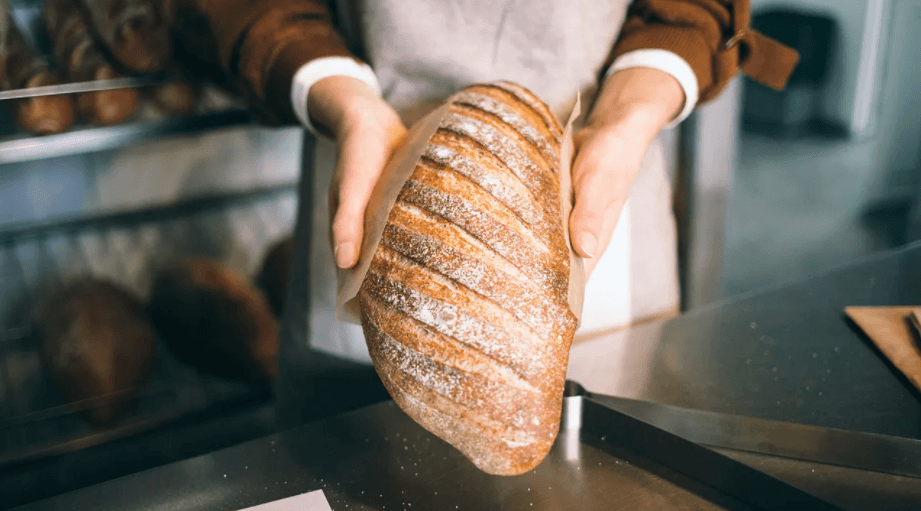Hashimoto’s and gluten: the benefits of going gluten-free
Struggling to lose weight with Hashimoto’s? Thyroid medication not improving your symptoms? It’s most likely an intolerance to gluten.
Many clients who’ve come to me with similar issues have seen positive results when they give up gluten and follow the anti-inflammatory Keto Girl Method. From weight loss to reduced medication – it can make a huge difference to your life.
Read on to find out more about Hashimoto’s and gluten – and whether a gluten-free diet is the next step for you.
What is Hashimoto’s?
Hashimoto’s (or Hashimoto’s thyroiditis) is an autoimmune disorder that impacts your thyroid. That’s the butterfly-shaped gland found just below your Adam’s apple at the base of your neck.
Your thyroid produces important hormones (triiodothyronine and thyroxine) that support lots of functions in the body. These include controlling your metabolism, heart rate, muscle control and brain function.
For people with Hashimoto’s, their immune system attacks the thyroid, causing their hormone levels to become too low. This often leads to hypothyroidism where the thyroid is unable to make enough hormones for the body.
It’s not exactly sure why this happens (many believe genetics, sex hormones and environmental factors play a role) but research has shown a lack of or too much iodine can be a contributor.
Symptoms of Hashimoto’s
Not all people experience the same symptoms of Hashimoto’s and it may take a few years for them to develop. It’s therefore important to see your doctor to get a diagnosis.
Common side effects include:
- Muscle aches or weakness
- Depression
- Constipation
- Weight gain
- Fatigue
- Hair loss
Hashimoto’s is more common for women, and irregular menstrual cycles can also be a symptom.
So what can you do about it?
Hashimoto’s and gluten – making a change to your diet
Many women with Hashimoto’s experience symptoms, even if they take medication. That’s because the things we eat have a huge impact on our antibodies – and one of the biggest influencers is gluten.
To fully understand the negative impacts of gluten on Hashimoto’s, we need to delve into what gluten actually is.
What is gluten?
Gluten is a naturally occurring protein found in wheat, rye, barley and other grains. It helps foods to maintain their shape, forming an elastic, chewy texture. Because of its culinary benefits, it is often found in processed foods, some of which you may find surprising.
So how does this relate to Hashimoto’s?
Because it has a similar molecular structure to that of thyroid tissue, it’s thought that gluten can trigger a thyroid attack.
People with Hashimoto’s tend to have a higher level of antibodies so when they eat gluten, their body remains in a constant ‘battle mode’, making it over sensitive and further prone towards autoimmunity.
Those with autoimmune conditions such as Hashimoto’s are more likely to develop celiac disease where gluten sensitivity is most common. This is where the antibodies attack the gut, skin and neurological tissues after gluten is detected.
If you test positive for celiac disease you will definitely need to go gluten- free, so it’s worth getting tested if you haven’t already.
A gluten-free diet can ease Hashimoto’s symptoms
Even if you don’t have celiac disease, going gluten-free can still improve symptoms of Hashimoto’s.
Gluten is sometimes shown to slow your metabolism, meaning you feel hungry and unfilled. By replacing gluten with other nutrients, you’re less likely to have uncontrollable cravings and unwanted weight gain.
Here’s the lowdown on what to eat and what to avoid with Hashimoto’s:
Foods to avoid
There are three main forms of gluten; wheat, barley and rye. A newer grain known as triticale is also a form of gluten which is sometimes used in breads, pasta and cereals.
Each of these ingredients can be found in a mixture of foods which should be avoided or swapped for gluten-free alternatives:
- Bread and baked goods
- Cereal
- Pasta
- Sauces
- Soups
- Salad dressings
- Beer
- Malt
- Food colouring
- Processed foods such as chips, crackers and snacks
It won’t always be obvious which foods are made with gluten, so always check the ingredients label.
When it comes to eating oats, most medical experts recommend only consuming those labelled gluten-free. While oats don’t technically contain gluten, they are often grown side by side with wheat, barley or rye, and are therefore easily contaminated.
As well as gluten, I often see other common food intolerances that lead to digestive issues with clients who have Hashimoto’s. This includes eggs and dairy. Click the links to find out more.
What about Keto?
Some ‘keto snacks’ still contain gluten so always check the ingredients label. It could be listed as wheat flour, or found under allergies. It’s always best to avoid highly processed snacks where possible or opt for gluten-free options.
Foods to eat
There are many delicious and beneficial foods to eat that will help to support a healthy immune system. This includes anti-inflammatory foods and iron.
Below is a selection of gluten-free ingredients you can eat if you have Hashimoto’s:
- Gluten-free grains such as brown rice, buckwheat and quinoa
- Proteins: meats and tofu
- Healthy fats: olive oil, nuts, almond/coconut milk, fatty fish
- Fruit
- Vegetables
- Foods rich in iron
Going gluten-free with Keto Girl
Need help with managing your Hashimoto’s? Want to get off thyroid medication?
If you’re regularly experiencing fatigue, bloating, cramps or anxiety, I’ve got your back!
Many of my clients come to me with gut issues and uncontrollable weight gain, despite making changes to their diet. That’s why I created the anti-inflammatory Keto Girl Method, a simple, step-by-step action plan that helps you to lose weight by addressing your individual root cause.






